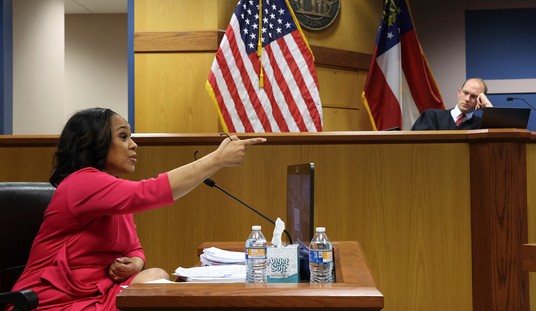As the POR (Pelosi-Obama-Reid) economy nears the end of its sixth year, one thing we can say for certain is that the “fundamental transformation” President Barack Obama, Senator Harry Reid, Congresswoman Nancy Pelosi and their party have long wished to impose on these United States has made measurable progress.
Democratic Party housing policies caused the recession. Obama’s conduct during the 2008 campaign and the presidential transition period lengthened it. His administration’s failed 2009 stimulus plan, followed by over five years of cronyism, demagoguery, and regulatory zealotry — now briskly advancing into bald intimidation — have slowed the alleged recovery to a crawl and exacerbated the very income inequality the left routinely denounces.
If there was a record for most economic reports issued which are worse than they initially appear, this bunch would hold it by a wide margin.
An obvious example of a bad number made worse after just a little investigation is in the April 30 report on first-quarter economic growth.
The government’s Bureau of Economic Analysis told us that the nation’s gross domestic product grew by a virtually imperceptible 0.025 percent (0.1 percent annualized). Even assuming no population growth, an equivalent result in the employment arena would see a company grant a 10 cents per week raise during each of the next four quarters to a worker currently earning $400. But of course, the U.S. population did grow, and real per capita GDP fell. Fixed investment, the factor which above all others drives genuine long-term growth and prosperity, contracted.
Obamacare defenders celebrated one component of the result, claiming that the first quarter of the statist health regime’s implementation was the only thing that kept the economy from moving into contraction. Applying just a little common sense reveals that Obamacare really sent the economy into decline.
Yes, health care spending increased sharply. But much of it likely was incurred by the millions of new Medicaid patients roped into the system by HealthCare.gov and the state exchanges (at least the ones, unlike Oregon’s, that work). Long-term studies have shown no significant improvement in medical outcomes in that program. That extra spending, higher Obamacare-caused insurance premiums (buried in the “financial services and insurance” line item in the GDP report, but likely responsible for almost all of its increase), and higher outlays on utilities during the rough, non-global warming winter caused all other forms of consumption to flatline.
In layman’s terms, Americans during the first quarter more than likely spent a whole lot of extra money on things which on the whole didn’t make them any better off, keeping them from purchasing many useful things they ordinarily would have bought. In the real world, Americans’ standard of living noticeably declined.
At first glance, Friday’s employment report from the Bureau of Labor Statistics seemed like good news. The economy added 288,000 seasonally adjusted payroll jobs, and the unemployment rate dipped to 6.3 percent. Again, a surface scratch reveals a largely ugly reality.
As has been the case throughout the nearly five years of alleged recovery, a wildly disproportionate number of the jobs added went to those in low-wage occupations, including temporary help services (24,000) and “food services and drinking places” (33,000) — a line item which, based on a report from the left-leaning National Employment Law Project, should be renamed “fast food services.”
So 1.1 million of the 7.8 million net jobs added since the recession as officially defined ended in June 2009 have gone to temps. Employment in that sector has increased during that time by 63 percent, while payroll job growth in all other occupations has grown by a paltry 5.2 percent. Those who argue that employers haven’t changed their staffing behavior as a result of Obamacare routinely ignore this ongoing structural change in the workforce.
As for the unemployment rate, it went down entirely because 806,000 people left the workforce. Since Barack Obama took office in January 2009, the 16-and-over civilian population has increased by 12.7 million, while the U.S. workforce has increased by only 1.2 million. The labor force participation rate has been stuck at or barely above levels last seen 35 years ago for the past seven months.
We’re at least three years past the point where anyone genuinely interested in turning the economy around would have recognized that their falsely applied, Federal Reserve-assisted Keynesianism on steroids wasn’t working, changed course, and tried something else.
It’s not like there aren’t alternatives. The application of supply-side economics-driven tax cuts and regulatory restraint in the wake of the 1980s recession grew the economy by an average of 4.4 percent per year for seven years while adding a well-paying, inflation-beating mix of 18.8 million payroll jobs. The Reagan economy added jobs at almost triple the annual rate during those seven years as the Obama economy has since the recession ended.
If Democrats are too proud to do what the Gipper did to make that happen, they could at least work with Republicans to create the conditions which largely drove the prosperity of the late 1990s — entitlement reform, balanced budgets, and reduced taxes on capital gains.
But they won’t attempt that either. As a result, the Federal Reserve under Janet Yellen has already given up on the idea that the economy can sustainably grow by more than 3 percent per year without triggering inflation.
The working assumption has to be that Team Obama, as they continue to consolidate their power, is okay with this miserable “new normal.” How much longer the American people will tolerate it, even with the press working mightily to conceal it, is the critical question.









Join the conversation as a VIP Member